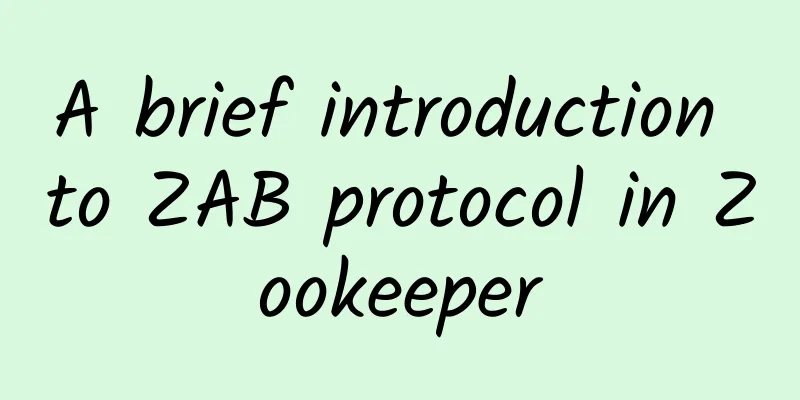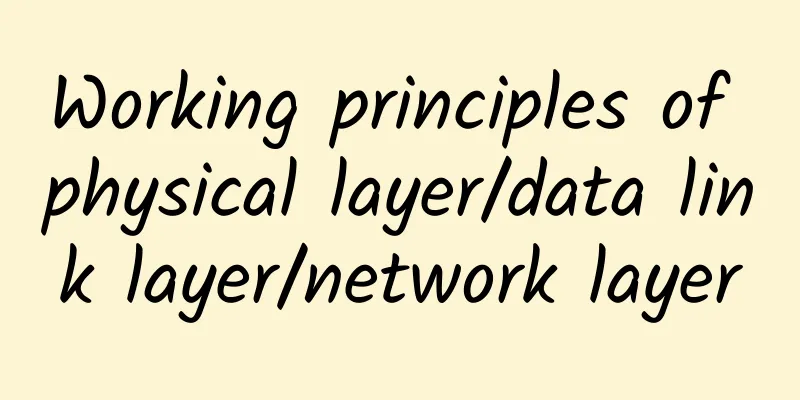A brief introduction to ZAB protocol in Zookeeper

|
The full name of the ZAB protocol is Zookeeper Atomic Broadcast Protocol. Function: The ZAB protocol can be used to synchronize data between active and standby nodes in a cluster to ensure data consistency. Before explaining the ZAB protocol, we must understand the role of each Zookeeper node. The role of each Zookeeper nodeLeader:
Follower:
Observer:
How to choose a Leader during the startup phase?When Zookeeper is first started, multiple nodes need to find a leader. How do they find one? By voting. For example, there are two nodes in the cluster, A and B, and the schematic diagram is as follows:
At this time, the voting information of node A is (2, 0), as shown in the following figure:
What should I do if the Leader crashes during operation?During the operation of Zookeeper, the Leader will remain in the LEADING state until the Leader crashes. At this time, the Leader must be re-elected, and the election process is basically the same as the election process in the startup phase. Points to note:
How to synchronize data between nodes?Different clients can connect to the primary node or the backup node separately. When the client sends a read or write request, it does not know whether it is connected to the Leader or the Follower. If the client is connected to the master node and sends a write request, the Leader will execute 2PC (two-phase commit protocol) to synchronize with other Followers and Observers. However, if the client is connected to a Follower and sends a write request, the Follower will forward the write request to the Leader, and then the Leader will perform 2PC to synchronize data to the Follower. Two-phase commit protocol:
Let's take a look at the process of Leader synchronizing data:
Next, let's see how the Follower handles the proposal transaction request sent by the Leader:
Now the data of the Leader and Follower are all in the memory and are consistent. The data read by the client from the Leader and Follower are consistent. How does ZAB achieve sequential consistency?When the Leader sends a proposal, it actually creates a queue for each Follower and sends the proposal to their respective queues. The following figure shows the message broadcast process of Zookeeper: The client sent three write transaction requests, and the corresponding proposals are: proposal01 : zxid1 After receiving the request, the Leader puts it into the queue one by one, and then the Follower gets the request from the queue one by one, thus ensuring the order of the data. Is Zookeeper strongly consistent?Official definition: sequential consistency. Strong consistency is not guaranteed, why? Because after the Leader sends the commit message to all Followers and Observers, they do not complete the commit at the same time. For example, due to network reasons, different nodes receive commits later, so the submission time is also later, resulting in inconsistent data among multiple nodes. However, after a short period of time, when all nodes commit, the data will be synchronized. In addition, Zookeeper supports strong consistency, which means manually calling the sync method to ensure that all nodes are committed for success. Here is a question: If a node fails to commit, will the leader retry? How to ensure data consistency? Welcome to discuss. Leader downtime data loss issueFirst case: Assume that the Leader has written the message to the local disk but has not yet sent a proposal to the Follower. At this time, the Leader crashes. Then you need to select a new leader. When the new leader sends a proposal, the zxid auto-increment rule included in it will change:
When the old Leader recovers, it will become a Follower. When the Leader sends the latest proposal to it, it finds that the high 32 bits of the zxid of the proposal on the local disk are smaller than the proposal sent by the new Leader, so it discards its own proposal. Second case: If the Leader successfully sends a commit message to the Follower, but all or some of the Followers have not had time to commit the proposal, that is, load the proposal from the disk into the memory, then the Leader crashes. Then you need to select the Follower with the largest zxid in the disk log. If the zxids are the same, compare the node IDs and use the one with the larger node ID as the Leader. This article tries to use plain language + drawings to explain, hoping to inspire everyone. |
Recommend
Cisco ASAP helps you to subvert the traditional architecture by starting the full digital transformation of data center
[51CTO.com original article] Enterprise digital t...
Finding edge applications on 5G
5G is considered a key part of delivering edge co...
Chinese companies account for more than 30% of global 5G standard patent declarations
CCTV News: The reporter learned from the Ministry...
SD-WAN Buyer's Guide: Key Questions Enterprises Need to Ask Vendors and Themselves
An enterprise's adoption of SD-WAN will start...
Tencent Cloud New Year Special Offer: 2C2G4M Cloud Server 30 Yuan/3 Months or 108 Yuan/Year
From February 15th to February 28th, Tencent Clou...
Interviewer: Can you tell me what are the commonly used network models?
Network I/O models are the policies and mechanism...
22 pictures to explain OSPF: the most commonly used dynamic routing protocol
Hello everyone, I am Xiao Fu. RIP Defects When ta...
DigitalVM: 50% off on all VPS, 1-10Gbps unlimited traffic starting from $4/month in the US/Japan/Singapore
Digital-VM is a foreign VPS service provider esta...
[Black Friday] spinservers: $49/month - E3-1280v5, 32G memory, 1TB NVme, 10Gbps bandwidth, San Jose/Dallas data center
Spinservers' Black Friday event has also begu...
Top 5 WiFi Network Predictions for 2017
We have seen WiFi undergo rapid changes, and in 2...
Insurance Geek: Lay a solid foundation and take group insurance to the extreme
[51CTO.com original article] As a worker, have &q...
HTTP 2.0 protocol interview questions that will make the interviewer tremble
Http protocol is easy to use for programmers with...
DiyVM: Japan Osaka/US Los Angeles/Hong Kong Shatin CN2 line 2G memory VPS monthly payment starts from 50 yuan
DiyVM has recently made major changes to the webs...
Is blockchain the next big thing? But it can easily fail if you’re not careful
On December 17 last year, according to the Bitcoi...









